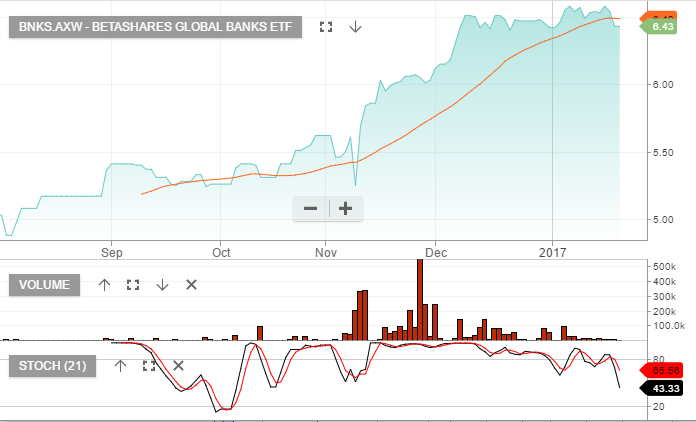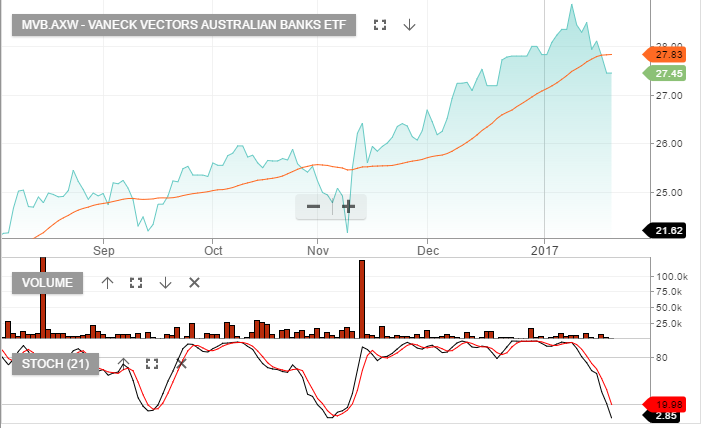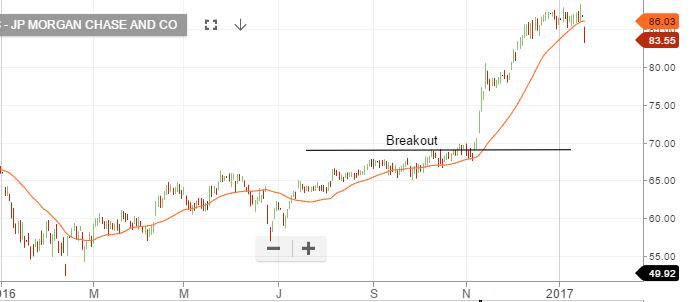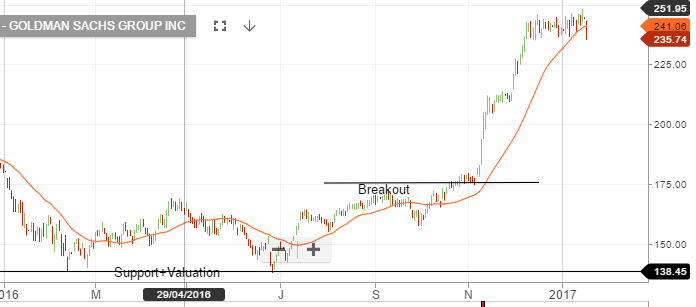Goldman Sachs surprised to the upside with Q4 EPS announced at $5.08, which was well above the market estimate of $4.73 and nearly 4 times the EPS of $1.27 reported a year ago. This was based on quarterly earnings of $8.17 billion versus forecasts of $7.76 billion.
Like other banks in the sector, Goldman benefited from a sharp uptick in trading activity. Net revenues from the institutional client services division were up 25% from a year ago, led by a 78% increase from the fixed-income, foreign exchange and commodities unit. Goldman shares closed down $1.45 at $234.
Citigroup had a mixed report with Q4 earnings beating expectations, but missing on their revenue figures. The banking giant announced EPS of $1.14 on revenue of $17.01 billion. Analysts were expecting EPS of $1.12 on revenue of $17.26 billion.
Trading revenue was higher at $3.20 billion, but considerably below the expectations of $3.45 billion. Fixed-income revenue also missed to the downside with Q4 reported at $2.21 billion verses an expected $2.83 billion number. Shares of Citigroup closed down 1.7% at $57.40, well below the one-year high of $61.50 posted January 4th.
Shares of NETFLIX posted an all-time high of $135.15 as earnings were marginally better than expectations, but the number of new subscribers increased sharply. The on-line entertainment company announced Q4 earnings of 15 cents per share on revenue of $2.48 billion.
These numbers were slightly better than the street’s forecast of 13 cents per share on revenue of of $2.47 billion.
More importantly, NETFLIX exceeded its own subscriber growth estimates by gaining 7.05 million new subscribers versus estimates of 5.2 million. This represents the biggest quarterly gain in the company’s history and triggered the initial rally in their shares. By the close, the share price had settle back to $133.25




